ABSTRACT
Accelerated Bridge Construction (ABC) techniques have a great potential to minimize the traffic disruptions during the bridge repairs/replacements, promote traffic and worker safety, and improve the overall quality of the built bridges. Despite the major advances in design and construction of ABC techniques, transportation agencies are still hesitant about using ABC techniques largely due to perceived risks during construction and higher initial costs.
Furthermore, the current decision process used to prioritize the candidate bridges for this type of construction is oftentimes solely based on metrics such as the average annual daily traffic (AADT). This paper proposes to use a metric employed by the World Bank to prioritize funding for aid in developing countries: social return on investment (SROI). SROI will measure the value of investment in ABC techniques to reduce social, economic, and environmental impacts to the road network users.
The Missouri Department of Transportation (MoDOT) completed the replacement of more than 500 bridges as part of the “Safe and Sound” project using the ABC techniques. This paper considers five counties, mostly with agricultural demographics in the state of Missouri, as the case study and estimates the SROI of the utilization of ABC. The results show that SROI provides a holistic measure to incorporate the socioeconomic aspects in the prioritization of the bridges that could benefit from ABC techniques.
METHODOLOGY
Reduction of road closure times, traffic disruption and user costs, in addition to improvements in construction quality and utilizing prefabricated elements, are all attractive qualities of the implementation of ABC techniques that encourage the transportation agencies to use the technique for repair and replacement projects.
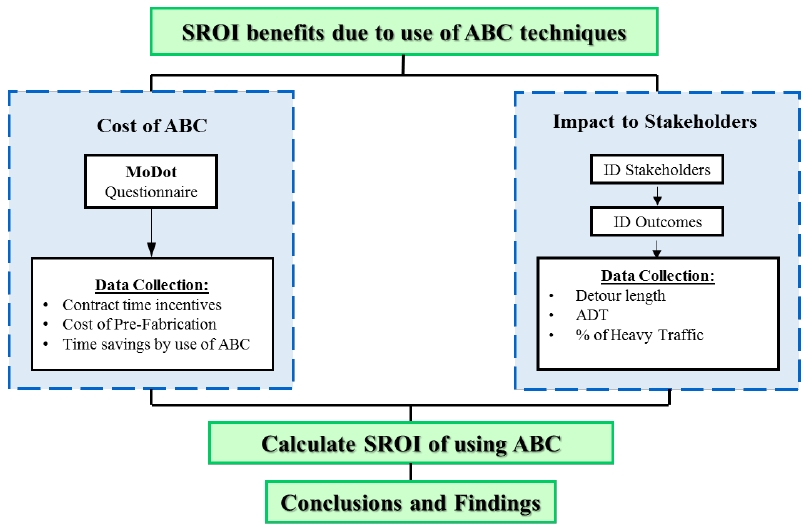
Figure 2. Case Study Methodology.
Collecting quantitative data to complete the SROI analysis consisted of review of project documents to obtain: overall cost of each bridge, schedule days of bridge closure time, location of each bridge, contract time incentives per bridge, detour length, and AADT. Following data collection, the results were analyzed and the output was used to conduct the SROI analysis. Figure 2 illustrates the methodology used to complete this study.
CASE STUDY CONTEXT
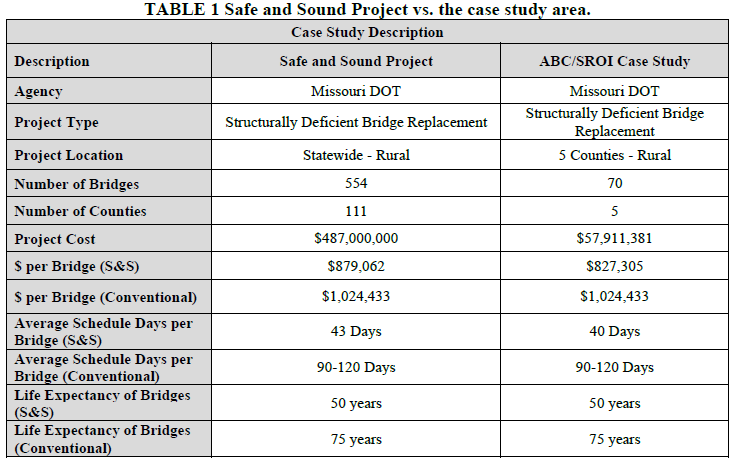
Table 1 provides contextual information of the S&S project and the sample bridges selected for this study. The table illustrates that the sample taken for the study is a good representative sample of the overall project with average schedule days and cost per bridge very similar to the overall S&S project.
SROI PROCESS
Figure 3 displays the process used to conduct the SROI analysis in this study.
CASE STUDY RESULTS
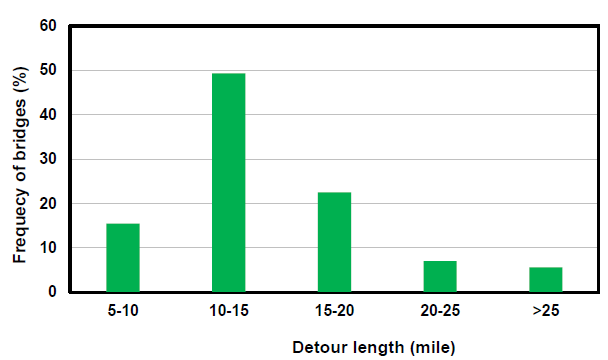
Figure 4 Distribution of detour lengths for the 70 bridges.
The specific impact to the road user of each bridge closure is unique to the location of the specific bridge. The detour distance and time varies from one bridge location to another as does the amount and type of traffic using the specific route. By increasing the amount of travel time and distance for the road users, there are impacts economically, socially, and environmentally for the traveling public using the road network. Figure 4 presents detour distances for each of the 70 bridges replaced for the S&S project in the selected 5 counties.
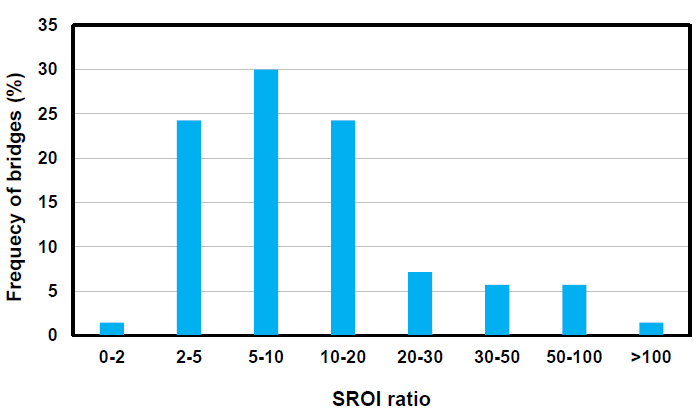
Figure 5 Histogram showing the percentage of bridges with the corresponding SROI ratio.
SROI, or in this case can be referred to as the benefit to cost ratio, was calculated for all 70 bridges included in this study. The results varied from a low SROI of 1.63 to a high of 118.38 with a median ratio of 9.65. The results indicate the benefits to the road users of Missouri are greater than the costs of implementing ABC techniques by a factor of approximately 10 on average. There were no instances when the costs were greater than the benefits of using ABC techniques. The histogram in Figure 5 shows the number of bridges with the corresponding SROI ratio.
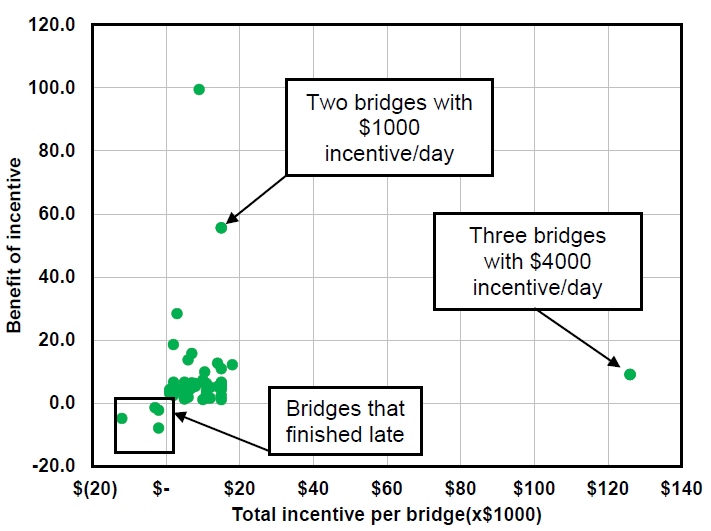
Figure 6 Benefits gained in RUC through early completion vs. the incentives per bridge.
The research investigated how well this time incentive investment made per bridge correlated to the road user impact benefits of each bridge location to determine if the prioritization of ABC investment was optimized to maximize the benefits to the project. For this purpose, the benefit of having incentive in place is calculated by estimating the number of days that a project was completed earlier (or later) than scheduled. The RUC was then estimated for those days. The ratio of the savings of (or lost in case of delays) RUC to the incentives spent (or disincentives charged) was calculated and presented in Figure 6.
CONCLUSIONS AND DISCUSSIONS
The goal of this project is to understand the circumstances that would result in choosing ABC technique over conventional construction. For this purpose the data from a recently completed design-build project under the S&S project in Missouri was collected and five specific counties from this project were studied. A new measure called SROI was used to estimate the benefit of early project completion through ABC and incentives were used to assess the benefit to the public in this scenario. It was shown that a large benefit to the public with a median SROI of a factor of 10:1 was achieved.
ABC techniques are highly effective in reducing the traffic disruptions during bridge replacements, promote traffic and worker safety, and improve quality and durability of bridges, however, the initial cost has prevented widespread and sustained implementation. The research here showed that implementing ABC on the 70 bridges resulted in an average 4.5% increase to the overall cost of the bridge, while there was a 64% increase in benefit for the road users of Missouri. It must be noted that the average total cost of the 70 bridges using ABC techniques included in this study was 20% less than typical conventional rural bridges of similar size and scope in Missouri. This overall construction cost reduction is due in part to efficiencies gained thru economies of scale due to bundling of 554 bridges under one agreement and standardized design.
SROI proved to be a useful metric in evaluation of the return on Missouri’s investment of ABC techniques on the S&S project. Using the SROI metric as a means to prioritize the use of ABC investment in rural regions is a more appropriate method as it provides a more robust, holistic evaluation accounting for social, economic, and environmental impacts to the stakeholders in rural areas better than simply using AADT as the measure. The research illustrated that prioritizing the use of the ABC techniques on bridges that have the greatest SROI impact enables an agency to use their investment in ways that will bring the most value for money to the project.
Source: Iowa State University
Authors: Philip J. Barutha | Ning Zhang | Alice Alipour | Douglas D. Gransberg
